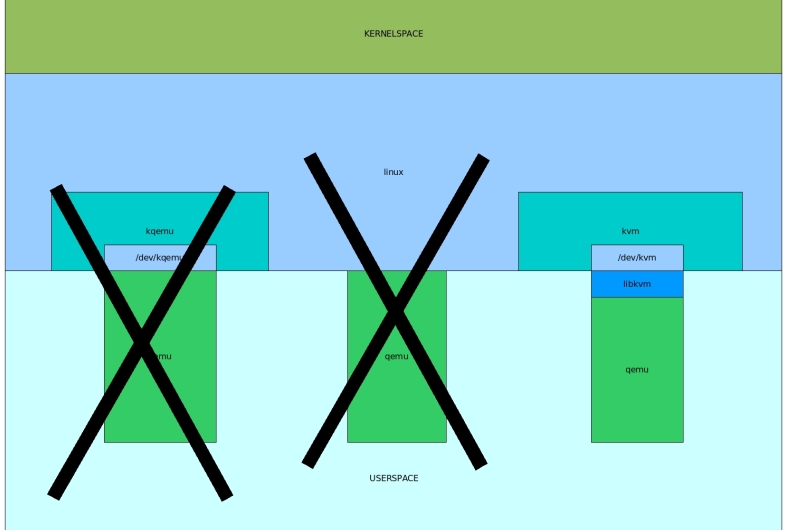Buildup: Difference between revisions
From KVM
No edit summary |
No edit summary |
||
| Line 1: | Line 1: | ||
Here is the setup which is used with kvm and qemu. Qemu can run as standalone, with kqemu module or with kvm module. In normal mode, only the user code is executed directly and the kernel code is still dynamically translated by QEMU. When KQEMU runs in full virtualization mode, both guest kernel and user code are executed directly on the host CPU. When run with kvm module, the CPU extensions (svm or vmx) are used. More information on http://fabrice.bellard.free.fr/qemu/kqemu-doc.html | Here is the setup which is used with kvm and qemu. Qemu can run as standalone, with kqemu module or with kvm module. In normal mode, only the user code is executed directly and the kernel code is still dynamically translated by QEMU. When KQEMU runs in full virtualization mode, both guest kernel and user code are executed directly on the host CPU. When run with kvm module, the CPU extensions (svm or vmx) are used. More information on http://fabrice.bellard.free.fr/qemu/kqemu-doc.html | ||
[[Image:aufbau.jpg]] | [[Image:Documents$$buildup$aufbau.jpg]] | ||
Revision as of 12:06, 4 February 2009
Here is the setup which is used with kvm and qemu. Qemu can run as standalone, with kqemu module or with kvm module. In normal mode, only the user code is executed directly and the kernel code is still dynamically translated by QEMU. When KQEMU runs in full virtualization mode, both guest kernel and user code are executed directly on the host CPU. When run with kvm module, the CPU extensions (svm or vmx) are used. More information on http://fabrice.bellard.free.fr/qemu/kqemu-doc.html
